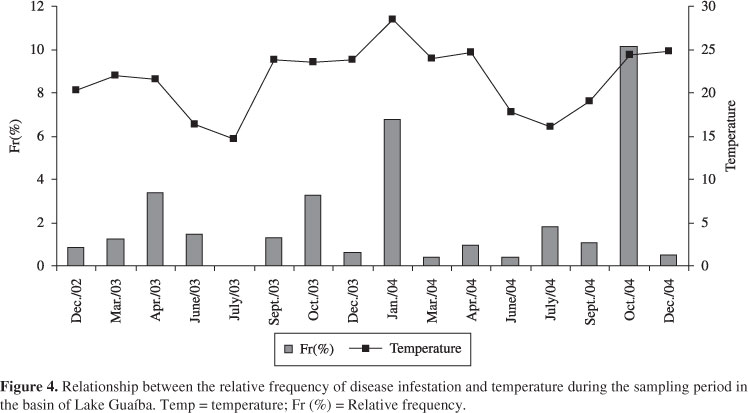The frequency of the black spot disease caused by digenetic trematodes in fish was tested as an indicator of the quality of water in the watershed of Lake Guaíba. Samples were standardised and quarterly made using a seine net at eleven sites in the basin. A total of 53,408 individuals of 66 specimens pertaining to 22 families and 8 orders were collected and analysed. The highest frequency of the disease was found in Astyanax fasciatus. The simple Chi-Squared test applied to the species showed statistically significant frequency of occurrence for three sampled sites. Two of these sites showed the highest frequencies for two consecutive sampling periods of one year and the best levels of water quality. Results of this study suggest that the association between high frequency of infestation by a parasite that causes the black spot disease in fish, and environments with less degradation in water quality, recorded from physical, chemicals and microbiological variables, could be used as an indicator of water quality in these environments.
black spot disease; environmental quality; Astyanax fasciatus; Guaíba Lake; RS; Brazil









